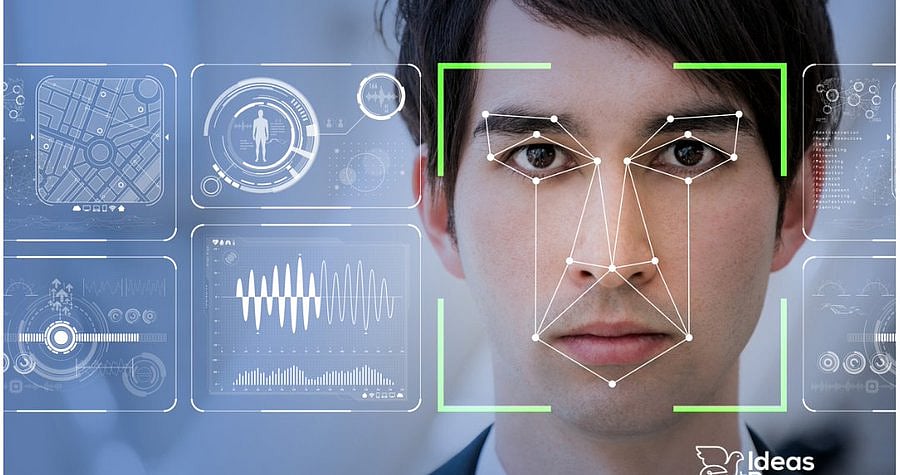AI holds vast promise in preventing crime and enforcing law like never before. Modern AI can enable law enforcement agencies to encourage public safety, cut crime rates, and foster community relations. However, all these statements must be accompanied by a warning, for AI should be used with due care and in socially responsible ways.
Artificial intelligence, something that once was a mere fantasy on the big screen, is changing the face of law enforcement as we know it today. The training is being done for AI in assisting law enforcement agencies to fight crime by solving cases and identifying possible criminals even before they commit the crime.
AI: New Weapon In Law Enforcement
Advanced AI in policing and law enforcement is closer than most think. Instead of basing things on speculation or gut feelings, AI can rummage through mountains of data and extrapolate patterns that human beings simply would not be able to recognize. This gives security personnel the power to avert crimes even before they are committed and to waste less time and resources attempting to solve crimes after the fact.
How AI Assists In Crime Solution And Deterrence?
Data Analytics: AI systems analyze massive chunks of data which can also be crime reports, video recordings, social network pages, etc. and make groups out of them
Facial recognition: Although it is the crowd when the face cannot be visibly seen, through AI based facial recognition technologies, a distant identity of that person may be determined even more effectively.
Natural Language Processing: Text data, of course, mainly from the social media and news pieces, is subjected to algorithmic detection of obvious risks and terrorist actions.
Criminal Record: Crime data from the past is used to develop algorithms which estimate the actual time when crimes may be committed and redirect the law officers.

AI Technology in Crime Mitigation | X (@BaptisteVicini)
Real-world examples of using AI Technology in Crime Mitigation
Predictive Policing: AI-powered predictive policing systems employ past crime data to determine the most likely areas to have a future propensity for criminal activity. This will enable law enforcement organs to respond to situations before any crime is committed. For example, The Chicago Police Department has embraced a predictive policing methodology that would reduce levels of crime incidences.
Facial Recognition Technology: Facial recognition is an AI-object-based technology that can rapidly scan through surveillance footage to retrieve a person's identity. This technology has been quite indispensable in many police investigations of loss of persons or terrorist attacks.
Autonomous Drones: Surveillance, search & rescue, or delivering much-needed supplies to distant areas can be done through drone's equipped AI. Such drones can use cameras, sensors, and other high technologies to gather useful data that can help police in policing activities.
AI In Crime Control
There are even more focused ways in which AI can be applied to crime prevention. These include:
Detection of Potential Threat: Social media, along with the internet in general, can be rated by AI for detecting youngsters who may become radicalized or are most likely to commit violent crimes.
Crime Predicting Model: The analysis of previous offenses through a few machine learning algorithms will significantly reduce the workload in many police departments because AI would have already predicted the next offense and the likely location.
Resource Management: AI driven tools are able to provide real time and accurate intelligence of which resources are needed by law enforcement organizations.
Crime Prevention with Artificial Intelligence
List of crimes solved using AI
Murder: Despite the unavailability of resources, the victim's identification or suspect's recognition is accomplished using AI-driven image recognition.
Burglars: Based on its research about the surveillance camera image through AI and identification of a few trends, burglaries involving property and burglary gangs can also be identified to arrest them.
Cyber Crime: Some hacking/phishing attacks that an AI tool can identify, as well as prevent themselves.
Countries Depending on AI for Crime Resolution
Crime Considerations around the world indicate that law enforcement needs to effectively monitor and control crime. Some of the important examples include:
United States: AI-based predictive policing or crime forecasting technologies like those in Chicago and New York City prove helpful in identifying areas that show a high crime rate and sending the most effective forces.
UK: Metropolitan Police Service of London is using AI technologies for support to surveillance and security on CCTV as well as social networks' data towards generation of intelligence concerning the possible suspects.
Delhi: AI algorithms have helped in blind murder cases in the cases Delhi Police to use a virtual reconstruction of the victim's face and large scale disseminate the same.
China: has built a high-tech system with the ability to monitor a huge population of citizens to sift out any potential threat that can be caused in any form and includes even facial recognition and the intelligent system.
Historical Perspective: The Genesis of AI in Law Enforcement
This concept of machine use in policing is not new. Back in the 1950s, Alan Turing, a great British computer scientist, suggested that it was possible to make use of machine intelligence in solving crimes. However, it is only in the last few years, with all the computing power and advanced AI algorithms, that we started seeing this vision come into being.
Drawbacks and Ethical Considerations
The use of AI does have several benefits for law enforcement. However, this also brings with it several concerns on privacy, bias, and the potential misuse of AI.
Privacy Issues: AI-based surveillance systems raise privacy issues. Their use should be ethically and transparently ensured.
Bias And Discrimination: AI algorithms are learned from data. When that data is biased, the AI system just perpetuates that bias. This may be discriminatory: targeting a community or even an individual.
Job Loss: There is also a prospect of job loss by the law enforcement themselves due to the automation through AI of tasks. Nevertheless, AI is not supposed to replace humans but complement them.
AI In War and Security
Lethal Autonomous Weapons: Ethical dilemmas in lethal autonomous weapons-the unfairness of a machine determining life or death.
Cybersecurity: AI finds applications in the detection and response of cyber incidents that are rising in complexity
Surveillance: AI-based surveillance systems can identify and track many vision targets. They can detect suspicious activities and individuals.
AI Surpasses Human Police
AI is better than humans in the following areas:
Data Processing: This is where artificial intelligence can go about raking through oceanic volumes of data swiftly and accurately — spotting patterns and anomalies that people might miss.
Objectivity: Artificial intelligence does not have the same kind of emotional biases that drive the human decision-making process.
24/7: Artificial intelligence can work around the clock because there is no rest or fatigue.
Prediction: With high prediction ability, artificial intelligence can foretell trends and patterns to allow law enforcement to be proactive and initiate any needful action.










